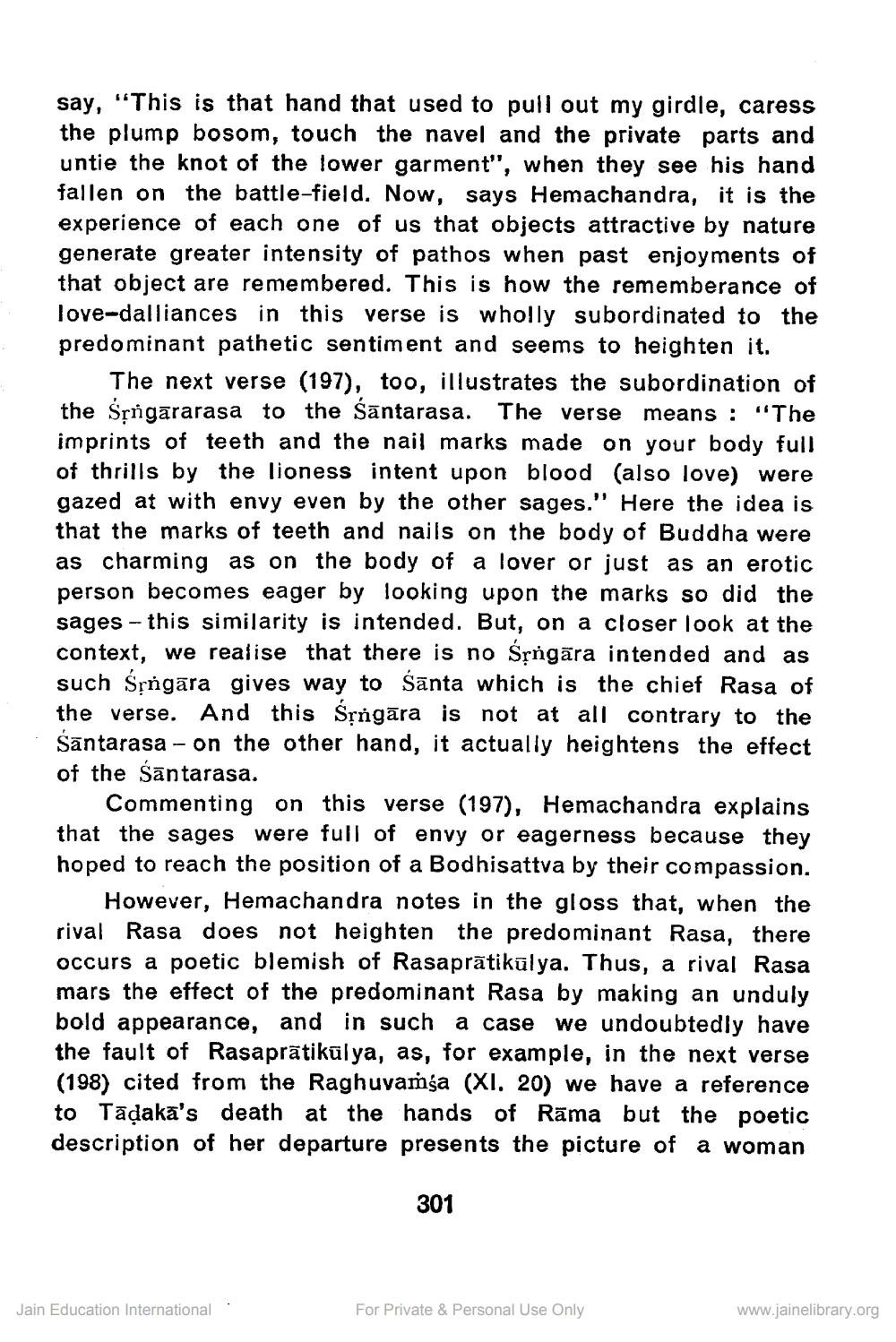________________
say, "This is that hand that used to pull out my girdle, caress the plump bosom, touch the navel and the private parts and untie the knot of the lower garment", when they see his hand fallen on the battle-field. Now, says Hemachandra, it is the experience of each one of us that objects attractive by nature generate greater intensity of pathos when past enjoyments of that object are remembered. This is how the rememberance of love-dalliances in this verse is wholly subordinated to the predominant pathetic sentiment and seems to heighten it.
The next verse (197), too, illustrates the subordination of the Sṛngararasa to the Santarasa. The verse means: "The imprints of teeth and the nail marks made on your body full of thrills by the lioness intent upon blood (also love) were gazed at with envy even by the other sages." Here the idea is that the marks of teeth and nails on the body of Buddha were as charming as on the body of a lover or just as an erotic person becomes eager by looking upon the marks so did the sages this similarity is intended. But, on a closer look at the context, we realise that there is no Śṛngara intended and as such Śṛngāra gives way to Santa which is the chief Rasa of the verse. And this Śṛngāra is not at all contrary to the Santarasa - on the other hand, it actually heightens the effect of the Santarasa.
Commenting on this verse (197), Hemachandra explains that the sages were full of envy or eagerness because they hoped to reach the position of a Bodhisattva by their compassion.
However, Hemachandra notes in the gloss that, when the rival Rasa does not heighten the predominant Rasa, there occurs a poetic blemish of Rasaprātikulya. Thus, a rival Rasa mars the effect of the predominant Rasa by making an unduly bold appearance, and in such a case we undoubtedly have the fault of Rasaprātikulya, as, for example, in the next verse (198) cited from the Raghuvaṁśa (XI. 20) we have a reference to Taḍaka's death at the hands of Rama but the poetic description of her departure presents the picture of a woman
301
Jain Education International
For Private & Personal Use Only
www.jainelibrary.org




